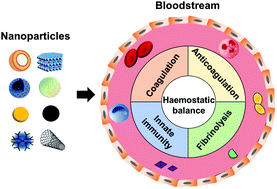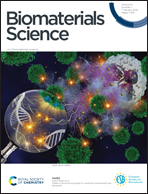Influence of nanoparticles on the haemostatic balance: between thrombosis and haemorrhage
Abstract
Maintenance of a delicate haemostatic balance or a balance between clotting and bleeding is critical to human health. Irrespective of administration route, nanoparticles can reach the bloodstream and might interrupt the haemostatic balance by interfering with one or more components of the coagulation, anticoagulation, and fibrinolytic systems, which potentially lead to thrombosis or haemorrhage. However, inadequate understanding of their effects on the haemostatic balance, along with the fact that most studies mainly focus on the functionality of nanoparticles while forgetting or leaving behind their risk to the body's haemostatic balance, is a major concern. Hence, our review aims to provide a comprehensive depiction of nanoparticle-haemostatic balance interactions, which has not yet been covered. The synergistic roles of cells and plasma factors participating in haemostatic balance are presented. Possible interactions and interference of each type of nanoparticle with the haemostatic balance are comprehensively discussed, particularly focusing on the underlying mechanisms. Interactions of nanoparticles with innate immunity potentially linked to haemostasis are mentioned. Various physicochemical characteristics that influence the nanoparticle-haemostatic balance are detailed. Challenges and future directions are also proposed. This insight would be valuable for the establishment of nanoparticles that can either avoid unintended interference with the haemostatic balance or purposely downregulate/upregulate its key components in a controlled manner.



 Please wait while we load your content...
Please wait while we load your content...